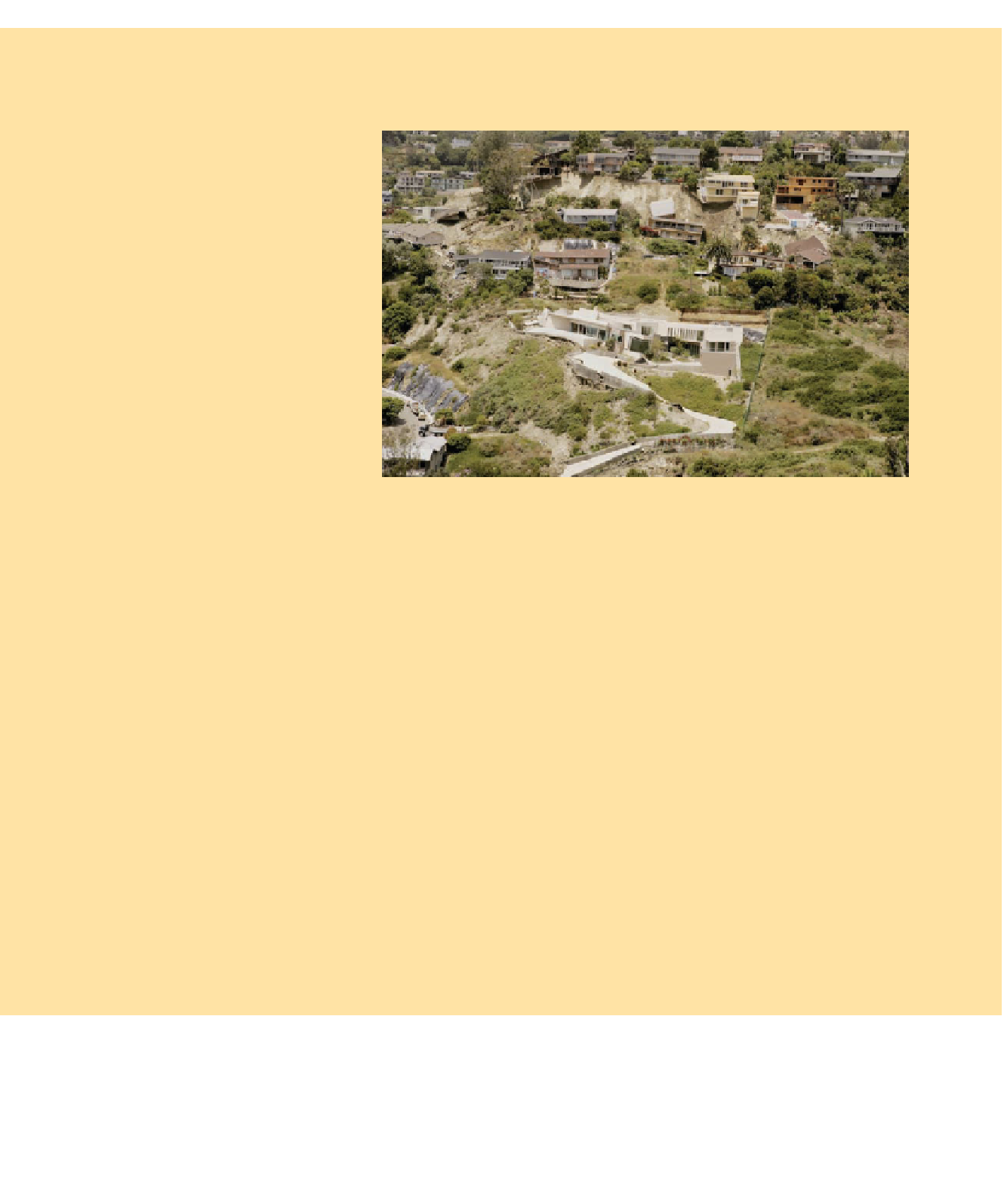Geology Reference
In-Depth Information
terrace behind La Conchita consist
of soft, weak, and porous sediments
that are not well lithified, and thus
are easily weathered and suscep-
tible to mass wasting. In addition,
an irrigated avocado orchard sits
on top of the hill, contributing to
the water percolating through the
porous sediments and rocks and
contributing to the instability of
the hillside. Add in heavy rainfall
over an extended period, and you
have all of the ingredients for a
landslide in the making. An ancient
landslide area to begin with, a steep
slope that has been undercut at its
base by a road, well-saturated sedi-
ments decreasing the cohesion of
the sediments that hold the hillside
together, and continuing rains all
contribute to the making of a land-
slide. And the potential is still there
for another landslide, with no guar-
antee it won't happen again in the
next 10 years!
Farther south in Laguna Beach,
another landslide, in this case a rock
slide, destroyed 18 expensive hillside
homes and severely damaged approxi-
mately 20 others on une 1, 2005
(
◗
Figure 3
A rock slide on June 1, 2005, destroyed 18 expensive homes and damaged at
least 20 others in Laguna Beach, California. Heavy rains combined with unstable underlying
geology contributed to this most recent landslide in this area.
numerous clay beds interbedded with
porous sandstones. Such conditions,
when combined with heavy rainfall,
are ideal for rock slides. It should come
as no surprise that the area where
both the 1978 and 2005 rock slides
occurred is also part of an ancient slide
complex.
Can anything be done to prevent
future landslides? The short answer
is probably no. Decreasing the slope,
benching the hillside, and making sure
that there is suffi cient drainage and a
good cover of vegetation are all steps
that can minimize future mass wast-
ing. But the sad fact is that the geologic
conditions are such that future land-
slides are inevitable as the landscape
seeks equilibrium conditions by adjust-
ing its slope. Add in the fact that the
coastal terraces of Laguna Beach offer
some of the most breathtaking views
of the Pacific, and people are willing
to pay a premium to live here, and you
have the formula for future landslides,
loss of life, and property damage.
Figure 3). ust as happened in 1978,
the main triggering mechanism was
probably unusually heavy winter rains,
in this case the second-rainiest season
on record. In this area of southern
California, the rocks dip in the same
direction as the slope and contain
◗
Farther south in the town of Laguna Beach, residents
have been hit by rock slides and mudslides in 1978, 1998,
and as recently as 2005, in which numerous homes have been
destroyed or damaged and two people killed (
Just as at Point Fermin, the rocks at Laguna Beach dip about
25 degrees in the same direction as the slope of the canyon
walls and contain clay beds that “lubricate” the overlying
rock layers, causing the rocks and the houses built on them
◗
Figure 11.12).

Search WWH ::

Custom Search